Monday, 6 June 2005
Distance 16 km
Duration 4 hours 0 minutes
Ascent 67 m, descent 90 m
Map 34 of the TOP 100 blue series (now superseded)
Topoguide (ref. 6552) Sentiers vers Saint-Jacques-de-Compostelle via Tours
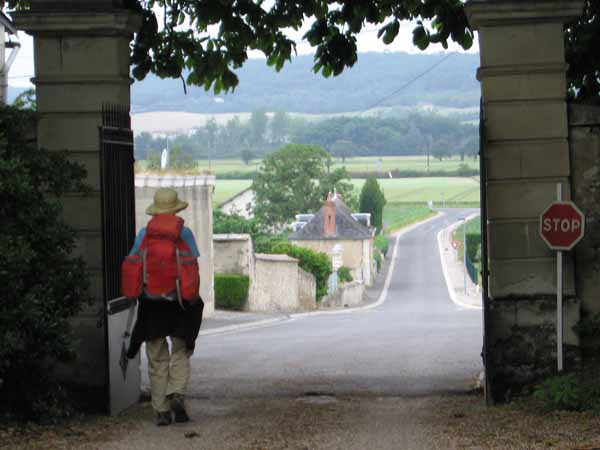
We woke at 9 am after eleven hours sleep, thoroughly restored. On the other hand my blisters were dreadful and we had run out of sticking plaster.
As we paid our bill in the beautiful reception chamber of the château, the duchess explained that we had slept so well because the lime trees were flowering and filling the air with their calming essence.
We looked around the estate with its chapel and donjon before emerging from the ancient wall and descending to Ingrandes. It looked a bit more welcoming than it had the evening before and we found a bar-tabac open for coffee.
Recrossing the railway line at the end of the town, we regained the GR and stuck religiously to it for the rest of the day’s walk.
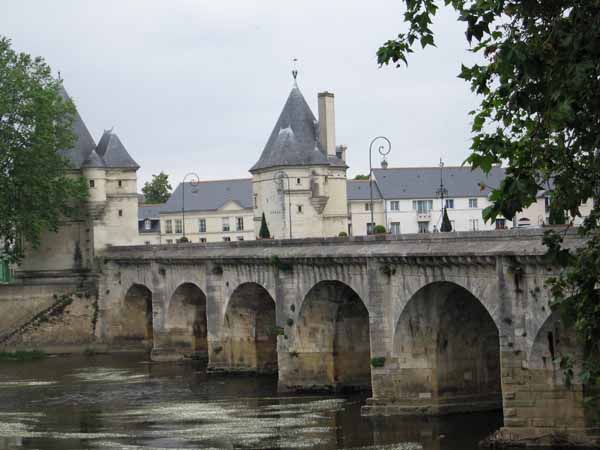
At first it was a country lane but then it crossed the highway and plunged into a ZI (zone industrielle), not the prettiest place but good for stocking up on lunch food at the big supermarket.
After that we got to a bike path and crossed the river on a strange two-storey iron footbridge.
A short walk beside the wharves of the former river port brought us to the famous Henri IV bridge and we crossed back to the town side and sat on a shady bench beside the water for lunch, the highlight of which was a goat’s cheese from Sainte-Maure with its characteristic central straw.
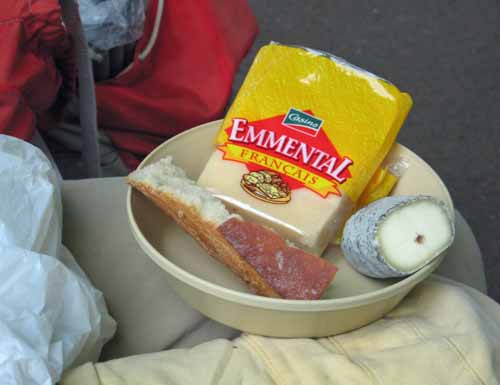
In former times, Châtellerault was a prosperous commercial centre because of its position on the navigable river Vienne, which connected with the Loire and out to the wider world.
Of the town’s many industries, the foremost was the making of cutlery, and later this led to an armaments factory which continued to operate until 1968. With the coming of the railway, Châtellerault lost its advantage and sank into relative obscurity.
Through some decrepit back streets, we came suddenly into the modern centre of Châtellerault, a wide, elegant square with the traffic divided on either side of a line of fountains and flower beds.
Here we completed our lunch with coffee and pastries. On the way back to the GR we came across the ancient pilgrim church of St Jacques, where a funeral had just emerged.
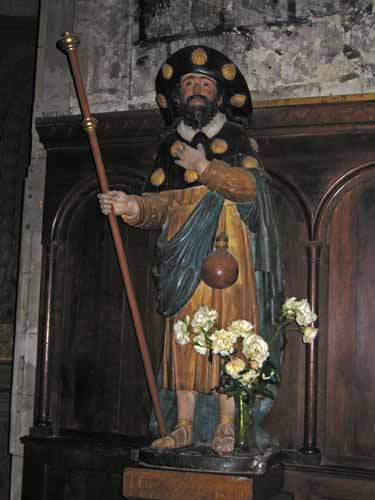
A big jowly man came up to us and greeted us as fellow pilgrims, saying that he had done the whole of the Way of Tours last year in two months.
He was keen for us to see the special treasure of the church, so he fetched the caretaker to unlock the door and we admired the wooden statue of Saint Jacques with his staff and gourd and his hat decorated with scallop shells. The other pilgrim saint, Saint Roche, with his dog and plague sore, stood nearby.
The walk along the river bank to the camping ground was surprisingly long. We passed the great abandoned armaments factory and went under two bridges before we got there.
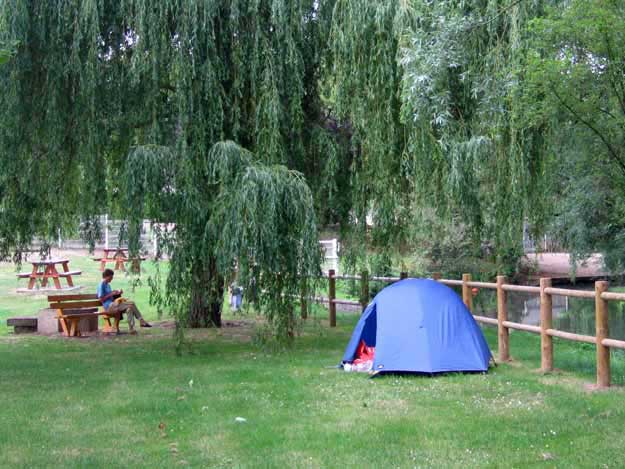
It was an open lawn beside a willow-lined stream and no sooner had we got there than there was a carolling “hello!” from a woman advancing towards us.
She was a cyclist from New Zealand, riding to Budapest with her husband. They had six months for the journey, but even so we were impressed.
We ended up spending the evening with them at a Vietnamese restaurant in the run-down Algerian quarter. It was a most enjoyable evening and a treat to speak English all night.
Previous day: Ste-Maure-de-Touraine to St-Ustre